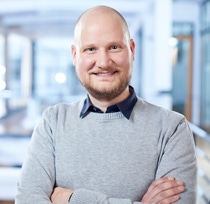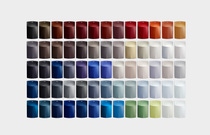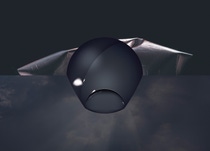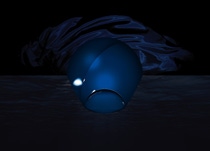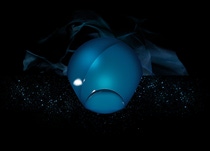Münster
The relationship to the digital world shapes BASF’s 2017/18 Automotive Color Trend predictions
- Collection entitled Translucid is determined by the beauty of the analog body and fluid grids
- Automotive color palettes are guided by high chromatic and interference effects
- EMEA presents a dark anthracite with unique Solaric technology
A desire for more simplicity and transparency in a digital world inspired the overarching theme of BASF’s Automotive Color Trends for 2017/18 – Translucid.
The designers of BASF’s Coatings division translated the question of individual data control, as well as the need for an extensive gathering of information for technical and social possibilities into a collection of 65 new automotive colors.
Digital Shifts – Intense blues and new light colors
In the digital world, the beauty of the body and other analog objects gain more attention with an increasing number of people looking to hide from data collectors and surveillance. This trend affects the automotive color palettes. Warm, beige colors deal with aspects of the skin, while dark and light blues express digitalization of the human body.
Increasing connection – Pastel and chromatic colors
In addition, data exchanged without the confines of time and space create fluid boundaries. Cars are developing from vehicles into highly complex products that communicate intensively with drivers and the environment. The intricacy of our connection to objects is reflected in dimensional sparkle and a mixture of crisp and clear effects. Pastel and chromatic colors and intense blues represent the image of new technologies and emphasize the uniqueness of the digital age.
In general, the relationship of fascination and fear as seen in the reflection in our digital mirror oscillates between dark and medium grays.
Color expertise of the Coatings division
The designers of BASF’s Coatings division in China, Japan, the United States and Germany develop up-and-coming colors for the automotive industry every year conducting extensive research and in-depth analysis. They uncover global trends and cultural shifts that will influence vehicle color choices three to five years from now. In addition to identifying global trends, the regional design teams find unique themes influenced by local circumstances and conditions in Europe, Middle East and Africa (EMEA), North America and Asia-Pacific.
EMEA – Back to the future
The people in EMEA are multi-faceted, and so are the trends in this region. They are guided by unseen possibilities and deceleration in our fast-moving globalized and digital world. Searching for the periphery of a global lifestyle and a customized automotive landscape leads to unexpected and unusual colors like a yellowish green with a mat clearcoat.
EMEA's diversity means that the region's design does not focus on Europe alone, but rather it adds the taste of nearby territories. In particular, the Middle East with its luxury-oriented product language is attracting attention. A whitish gold with a structured clearcoat expresses this perspective. In addition, in a world with steady Wi-Fi access, there is a strong need for physical objects. This is why retro-fitted “antiques” like vinyl record players are trendy. Serving to upgrade old times, this trend is translated into a medium light brick-like color with red highlights and a solid flop.
The new standard of car colors needs to be rethought and will have added functionalities, like LK Black. This modern interpretation of a dark anthracite uses the innovative Solaric technology. The solar heat management system reflects near infrared light and in doing so reduces the temperature on the surface and inside the car when it is hot and sunny.
North America – Back to nature
Technology’s encroachment on our daily lives – as well as the desire to break away and reconnect to a more natural world, the community and our own body – was explored as a trend contributing to BASF’s North America color predictions. The region’s key color is Undercurrent Blue, a very dark navy blue color with a silky texture that exudes a sense of mystery and celebration of self. This color leverages simple, in-use pigmentation technology, yet offers a sophisticated color position.
Asia-Pacific – Back to culture
Applications and products with a unique Asian style are taking on high value and significance. This new self-confidence on the part of the Asian people is expressed in a white pearl as one of the iconic colors standing for the region’s unique spirit. Moreover, worldwide appreciation of the Asian culture is giving a voice to young people and to groups that have been struggling for recognition in the economic upswing in the recent past. A deep saturated red with brilliant glass flakes underlies the sophistication to which the groups are raising their voices.
» For further information, please click here.
About BASF’s Coatings division
The Coatings division of BASF is a global expert in the development, production and marketing of innovative and sustainable automotive OEM and refinish coatings, as well as decorative paints. We create advanced performance solutions and drive performance, design and new applications to meet our partners’ needs all over the world. BASF shares skills, knowledge and resources of interdisciplinary and global teams for the benefit of customers by operating a collaborative network of sites in Europe, North America, South America and Asia Pacific. In 2016, the Coatings division achieved global sales of about €3.2 billion.
In 2016, BASF acquired Chemetall, a leading global supplier of applied surface treatments for metal, plastic and glass substrates in a wide range of industries and end markets. With this expansion in portfolio, BASF becomes a more complete solution provider for coatings.
Solutions beyond your imagination – Coatings by BASF. For more information about the Coatings division of BASF and its products, visit www.basf-coatings.com.
About BASF
At BASF, we create chemistry for a sustainable future. We combine economic success with environmental protection and social responsibility. The approximately 114,000 employees in the BASF Group work on contributing to the success of our customers in nearly all sectors and almost every country in the world. Our portfolio is organized into five segments: Chemicals, Performance Products, Functional Materials & Solutions, Agricultural Solutions and Oil & Gas. BASF generated sales of about €58 billion in 2016. BASF shares are traded on the stock exchanges in Frankfurt (BAS), London (BFA) and Zurich ( BAS ). Further information at www.basf.com.
